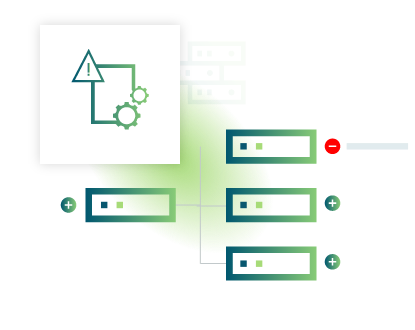In today’s competitive landscape, the ability to leverage data to quickly make informed decisions is critical.
But that alone is not enough.
In order to thrive, you also need to put data to work addressing challenges your organization faces. And increasingly, artificial intelligence (AI) is a powerful tool to handle both these fronts.
Here are some examples:
1. Fraud prevention
It is an unfortunate fact that every minute of every day, bad actors are cooking up new ways to defraud organizations and customers.
Combating these threats takes more than being reactive, which is why smart organizations are using AI to sift through massive amounts of data in search of irregularities and potential cases of fraud in real-time.
For an example of this, look to the financial industry, where institutions can now monitor millions of transactions each day and immediately flag suspicious activity on customer transactions.
As a result, they can reduce financial stress for customers and provide better overall service.
2. Resolving churn
Regardless of the industry, organizations must constantly be on the alert for churn—not just in their employees but in their customers as well.
In-house, AI can help organizations use automation to reduce the number of dull and repetitive tasks that often lead to employee burnout.
For customers, meanwhile, AI-driven chatbots can provide better service, quickly surface products and services customers are looking for, and reduce the common frustrations that lead customers to spend their dollars elsewhere.
3. Brand positioning
Social media platforms offer customers a megaphone for talking about your organization’s brand. With so many users—and so many posts made each day—monitoring how your brand is being discussed can be impossible to do manually.
By utilizing AI to monitor and analyze social media feeds in real-time, you are in a much better position to react to—and even get ahead of—complaints about your brand, or pivot your messaging based on how your competitors are
being talked about.
4. Resource planning

Applying AI to historical and current data can help you take the guesswork out of forecasting resource needs. Everything from employee productivity to equipment usage and customer trends can be examined and applied toward future resource procurement.
This greatly reduces the risk of overprovisioning, which leads to substantial waste. It also helps inoculate you against potential missed opportunities from not having the resources on hand to act quickly.
5. Outages
Organizations that remain competitive are able to move fast enough to keep up with or get ahead of, the market.
Increasingly, these organizations are the ones that employ AI to help accelerate how they make decisions—not just in reaction to changes in the market but to adapt on the fly to where the market is headed.
Start developing an AI strategy for your business today. Download our free eBook, Take Flight: The CIO’s Guide to Leveraging AI to Leap Ahead of the Market.














